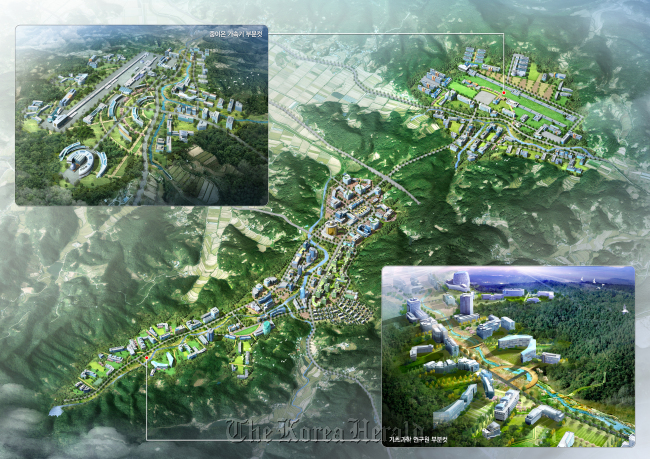Since opening the Korea-U.S. Cooperation Center for Accelerator Science and beginning work on the design of the rare isotope accelerator, the Institute for Basic Science has sped up preparations for the country’s first particle accelerator of its kind.
The purpose of a rare isotope accelerator is to produce isotopes of elements that do not or rarely occur naturally. An isotope is a variant of an element that has a different number of neutrons in the nucleus.
Under the plans the IBS’ accelerator, known as the Korean Rare Isotope Accelerator or KoRIA, will likely consist of circular and linear accelerators that are connected, both of which will be built about 10 meters underground at a 1.08-square-kilometer site in Daejeon.

An illustration of the rare isotope accelerator and the Institute for Basic Science. (Institute for Basic Science)
The facilities will be capable of accelerating heavy ions, starting from elements larger than helium up to uranium.
In a rare isotope accelerator, particles are accelerated to speeds approaching that of light, and by colliding the particles into a target, particles that have different numbers of protons from the target and the original particle are created.
Although an accelerator may appear to be of use only to physicists and for theoretical fields, rare isotopes generated at such facilities have a wide range of applications.
According to the IBS, its rare isotope accelerator will provide the basis for scientists to look into fundamental issues such as the origin of the universe and how elements are formed, but also at more practical fields such as nuclear power, materials engineering and producing elements with medical applications.
By Choi He-suk (
cheesuk@heraldcorp.com)






